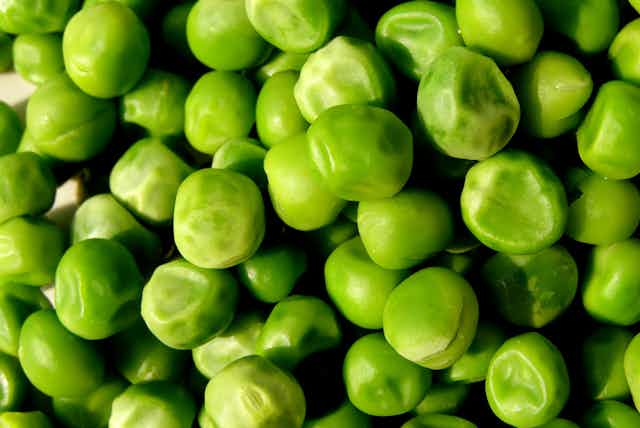Pea tart might be the key to winning hearts and minds in the war against poor nutrition. We are deluged with advice and guidance about what we should eat and in what volumes, but still adults and children alike struggle to introduce enough fruit and vegetables into their diet.
It is well known that a balanced diet is a healthy diet and that plenty of kale, beetroot, kiwis and bananas is good for us. It all goes back to 2003, when the World Health Organisation launched a global campaign to promote fruit and vegetable consumption. They proposed that we should all be eating a minimum of 400g each day.
Right around the world this message gained traction. In the UK, the 400g was translated into more consumer-friendly guidance and became the now well known five-a-day mantra. The UK Department of Health launched a significant media campaign to raise awareness of this healthy eating push. We were told make sure we got our handful of 80g servings, equivalent to a small banana, a pear or three heaped tablespoons of spinach or peas.

Obstacles
But despite the clear health benefits and the prominent media campaigns, still only one in ten children, and less than a third of adults eat the recommended five-a-day, according to the latest government figures.
Worse still, one recent study questioned whether five is enough. The authors highlighted the benefits of eating far more fruit and vegetables – as many as ten portions a day.
The trouble is, rather than progressing through to five portions a day and on to ten, there is evidence to suggest that diets are actually getting worse in this regard. Studies have shown that when budgets are tight people are likely to consume food of poorer nutritional quality. This trend is primarily driven by a substitution of fruit and vegetables with cheaper, less healthy, processed foods. Journalists were quick to adopt the catch phrase “nutrition recession” when budgets were squeezed in 2012, and a similar effect is likely to be happening now as fresh fruit and vegetable prices are rising.

Dish of the day
Perhaps the process has been made something of a chore. The idea of a portion being described as heaped tablespoons of spinach makes it sound very much like taking your medicine rather than eating a gastronomic tour de force. Our team at Bournemouth University has been leading an EU-funded project, researching how vegetable consumption can be made more enjoyable. This VeggiEAT project has been a collaboration with French culinary hospitality school Institut Paul Bocuse, universities from across Europe and Bonduelle – a global vegetable processing firm. The aim is to understand people’s vegetable preferences and how they might be influenced to eat more.
The good news is that early results indicate that the more someone eats a given vegetable, the more they will say that they like it. A case of familiarity breeding contentment perhaps.
It is no surprise either that sweetness is a key to getting us to enjoy veggies, as is richness in flavour characterised by intensity of taste. On the flip side, any sour or bitter notes in the flavour turn people off. The same evolutionary process that has driven humanity’s sweet tooth and saddled us with obesity issues in a time of plenty also acts to dissuade us from a diet that would make us healthier.

The taste testing research was conducted across Europe and used to inform the development of new recipes by our collaborators at the Paul Bocuse culinary school. The recipes are designed to offer an easier route to getting your five-a-day and include things like sweetcorn soup, vegetable burger and pea tart which aim to address those key turn-ons and turn-offs, providing the optimal sweetness and strength of flavour to get reluctant vegetable eaters on board. The tart was a particularly popular choice. The idea is that the research can deliver dishes are suitable for school and care home meals, easy to prepare and within a tight budget.
The vegetable burger is getting some extra testing and has been trialled by more than 400 children of 12 and over as well as 400 people aged over 65. The full analysis of this data is underway but initial findings are very positive and offer some encouragement that there are more exciting routes to follow towards our five-a-day (or even ten-a-day).
Our study showed that where vegetables can be used as a dish ingredient – used imaginatively to create something greater than the sum of its parts – then they are easier to accept. It’s rather like the spoonful of sugar taken with your medicine.
It is important to make this effort, as there is little evidence that simply repeating the message will work. And we cannot ignore how clear the benefits of increased fruit and vegetable consumption appear to be. One study from Imperial College London calculated that eating ten portions of fruit and veg a day could prevent 7.8m premature deaths each year. Happily, even eating small amounts brought significant health gains and reductions in risk for things like cardiovascular disease and cancer.
And aside from the health benefits, we can’t ignore the climate impact of a rising global appetite for meat and animal products. Everyone has a vested interest in getting people to eat more fruit and vegetables, and that means finding new ways to make them much more popular.

